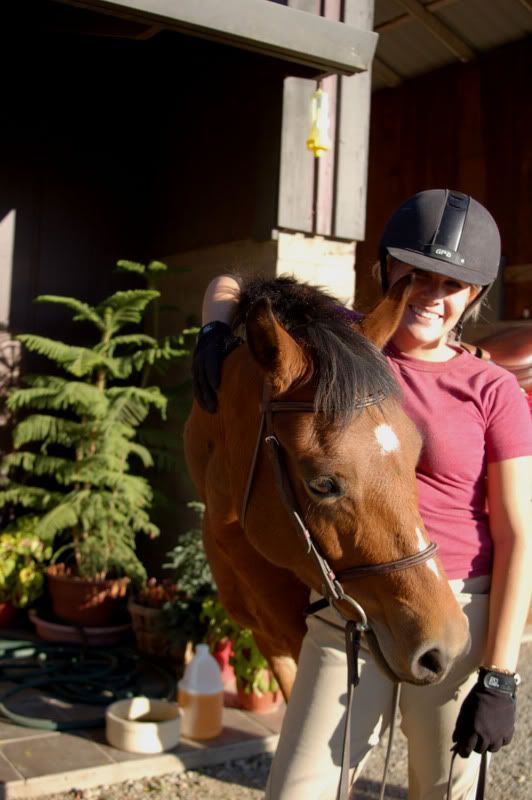I know its only October, but our area has been getting an early taste of winter this year so I thought I would post some helpful tips on how to keep your horse healthy, warm, and happy all throughout the season.
It's always a good idea to start out by evaluating your horse's living quarters. Does he spend all his time in an open pasture or is he stall-bound? Or, does he have a box stall with a run? A paddock? Etc. A horse in open pasture will need a shelter from both rain and wind.
If your horse is not showing, allow him to develop his thick winter coat by nixing the blankets in the early months of winter. By letting him acclimate to the changing conditions you are keeping your horse more comfortable in the long-run. The problem with blanketing "outdoor" horses is that blankets can slip, causing rubs, sores, and can become damp serving to chill the horse rather than to keep him warm.
It's smart to have someone around here and there to monitor the situation if you do decide to blanket. They can make adjustments, or remove them if the blankets become damp or if the temperature decides to rise.
If you do heavy winter riding, consider a body clip. There are many different kinds of body clip "styles" that are suited to the individual needs of the horse. Any horse that is body clipped will need to be blanketed.
The next step would be to check your feeding system and rations. This depends on the age of your horse, the size, and the workload your horse will be put through in the winter. For example, an adult horse under light work needs about 1 percent of his weight in hay/roughage, and a good grass hay will be sufficient. If needed, you may add a concentrated feed (or grain) to his schedule.
A horse will drink six to ten gallons of water per day. Amazing right? So you must make sure there is a clean source available at all times. This may mean (depending on where you live) chipping the ice out of the water buckets at each feed time. Salt blocks are neccesary year-round, so be sure those are clean and available as well.
Last but not least, don't skimp on hoof care!! Even barefoot horses' feet need to be picked out daily to prevent problems such as thrush, etc. In addition, the hoof wall does not stop growing during the winter, and will need regular balancing to keep its shape. More importantly, the farrier will check for bruises on the soles of the feet caused by hard ground or ice. Many hoof abcesses found in the spring were actually caused by undiagnosed bruises obtained in the winter.
So there you have it, the basics of winter horse care. By following these guidelines you'll be sure to have a safe and healthy horse. So enjoy the holiday season, saddle up, and have a great ride!
05 October, 2007
Subscribe to:
Post Comments (Atom)




No comments:
Post a Comment